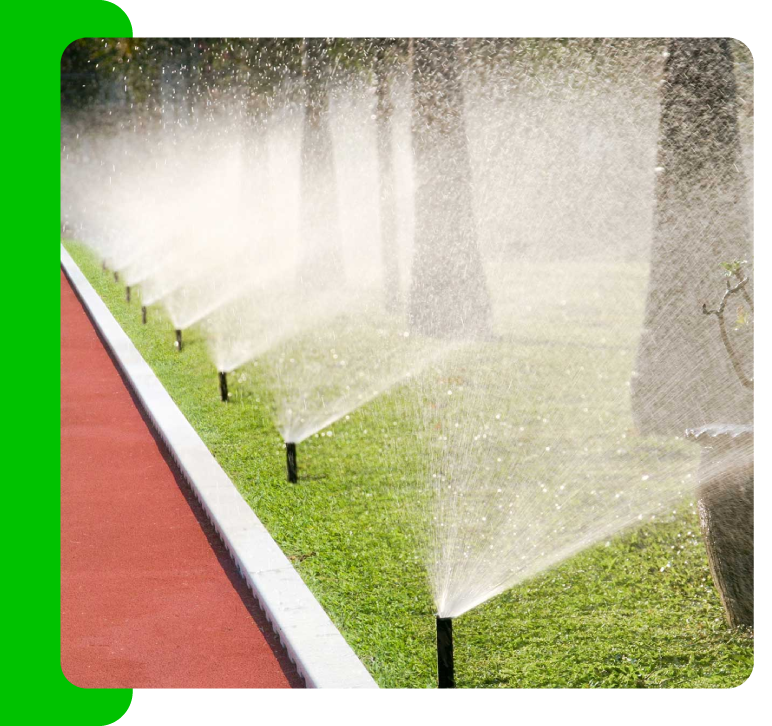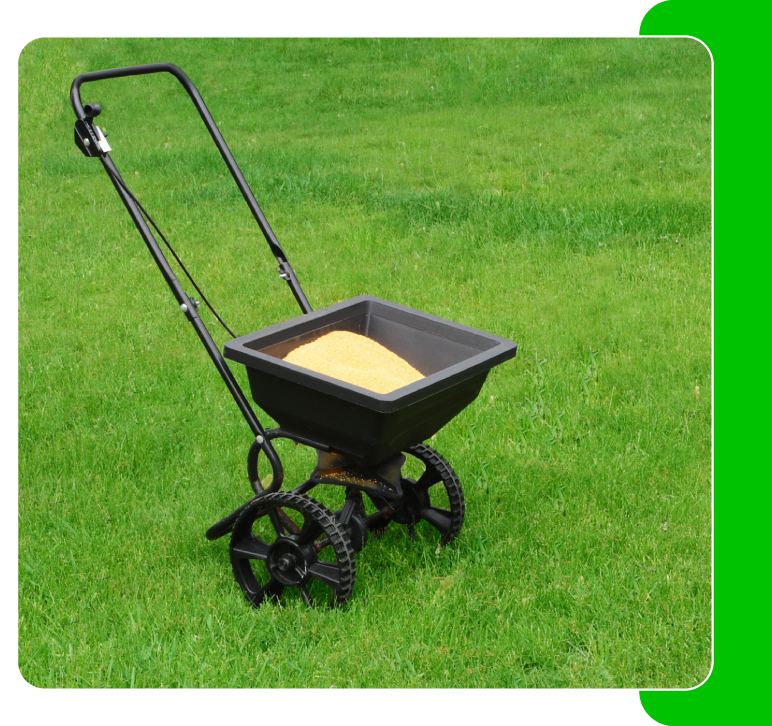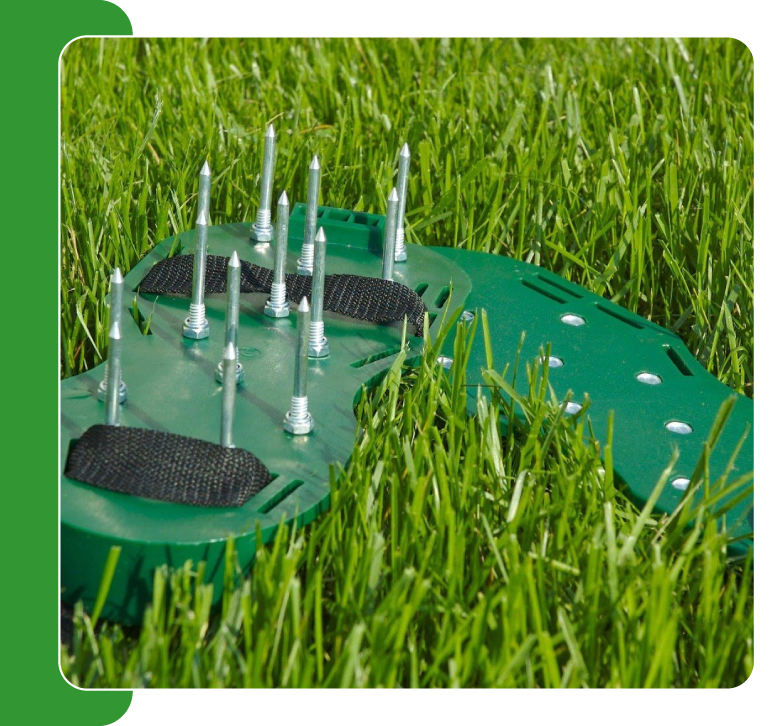Care & Maintenance
Mowing
Mowing is critical to maintaining a healthy lawn. You should adjust your mowing practices based on the seasons, weather, nutrients, and other factors. A key rule is to never cut more than one-third of the leaf blade at once.
Grass has a growing point near the ground from which all leaves arise. When you mow frequently, this growing point stays low. However, the growing point moves higher if the grass grows too tall. Mowing too closely when this point is elevated can damage or remove it, along with the grass blades.
If your lawn has not been cared for in a while, set your mower to a higher cutting height for the first mow, then gradually lower it to the optimal height. Regular mowing at the right height helps avoid excessive leaf removal, promoting a lush and healthy lawn without scalping.
Also, consider the specific type of grass when mowing. For couch grass, the optimal height is between 5 mm and 30 mm, while buffalo grass should be mowed between 30 mm and 50 mm. Avoid mowing during hot weather; never cut the grass shorter than recommended. Lastly, always ensure your mower blades are sharp for the best results.

Watering
Irrigation is adding supplemental water when rainfall is insufficient to meet the plant’s needs. In dry regions, irrigation is necessary for turf survival. Limited water supplies across the country have placed a new emphasis on the responsible use of water when water shortages occur. Lawn irrigation often is one of the first uses to be limited. Water only when your lawn needs it.
How often you water your lawn will depend on the weather, lawn type, and soil conditions. Sometimes your lawn will change colour, fold its leaves and look greyish; this indicates that it may need watering. The lawn should be partly dried out between watering; this lets air into the root system, stimulates deeper root formation, and creates a more drought-resistant lawn.
This can also be tested by a soil moisture meter, or simply by using a long screwdriver or spade. To minimise water wastage, test the wetting depth of your lawn after watering and only continue watering to wet the full root depth.
Contact your supplier for watering guidelines for establishing a new or existing lawn in Sutherland, Hawkesbury, Campbelltown, Northern Beaches, or any other Sydney area.
BEFORE WATERING YOUR LAWN, PLEASE CHECK IF WATER RESTRICTIONS ARE IN PLACE WITH YOUR LOCAL WATER AUTHORITY.

Fertiliser
Fertilising is the process of adding a natural supplement to improve soil structure, support healthy plant growth, and maintain a vibrant lawn. It is essential to use well-balanced fertilisers according to the manufacturer’s specifications, typically every 4 to 12 weeks. Regular application of fertiliser throughout the year, especially before cooler seasons and periods of water restriction, helps maintain an optimal lawn appearance and aids in recovery from damage.
Fertilise thoroughly in autumn; a healthier lawn going into winter will promote better growth and performance. When using fertilisers regularly, conducting a soil analysis is essential to ensure that all major trace elements are at the correct levels.
We offer specially formulated professional blend fertilisers that include Nitrogen, Phosphorus, and Potassium, along with a pre-lawn starter fertiliser. You can order these products by contacting our office.

Older Lawns
Older lawns often suffer from compacted soil, which can hinder the penetration of oxygen and fertilisers. Aeration can help improve this situation. It’s best to aerate your lawn from early spring to late summer using a pitchfork, aerating sandals, or renting an aerator from your local machinery hire outlet. Before you begin, check for any underground services or irrigation pipes.
Thatch, the organic layer that builds up above the soil, may also require attention. If it becomes too thick, de-thatching is necessary. You can hire de-thatching machines from your local machinery rental providers.
After applying fertilisers, always ensure that you water your lawn thoroughly. The type and amount of fertiliser or chemicals needed will depend on various factors, including the climate, lawn type, soil characteristics, and any existing insect, weed, or disease issues in your area. It is advisable to consult with your local nursery supplier for tailored advice.
Exercise caution when using fertilisers or chemicals and always follow the manufacturer’s instructions. Additionally, be aware of any local water restrictions that may be in place. This information serves as a general guide, as each situation is unique.

Build a Lawn Starter
This procedure can be used on all types of turf to take advantage of the benefits provided by Aquasorb crystals. Builda Lawn Sfertilisera premium starter fertiliser blended with Aquasorb water crystals, specifically designed for establishing a newfertilisers combination of slow-release fertilisers promotes rapid root growth, which ifertilisers for developing a strong and healthy lawn. Slow-release fertilisers are crucial during this establishment phase, as they ensure a continuous supply of nutrients.
Additionally, Aquasorb water crystals help maintain moisture during dry periods and retain much of the natural water from rainfall. These crystals can hold up to 400 times their weight in water and release 95% of that moisture back to the lawn.

Application
Lawn starter needs to be applied under your new lawn.
For your lawn to benefit the most from the per lawn builda apply at 30g/ m². This 3 kg bucket will cover 100 m2. For optimal results, spread the starter over the turf underlay or soil and rake the area lightly to about 30mm depth.
Maintenance of lawn Build a Premium Fertiliser
Enhance your lawn using this fertiliser specifically developed for premium lawns.
The blend of slow-release fertilisers promotes good growth, vital for a strong and healthy lawn. Slow-release fertilisers are important to established lawns and provide a constant supply of nutrients. Always water the fertiliser immediately after application.

Application
Build a Premium Fertiliser has been designed for the best results when applied at 25g per m2. This bucket will cover about 150 m² of water.
